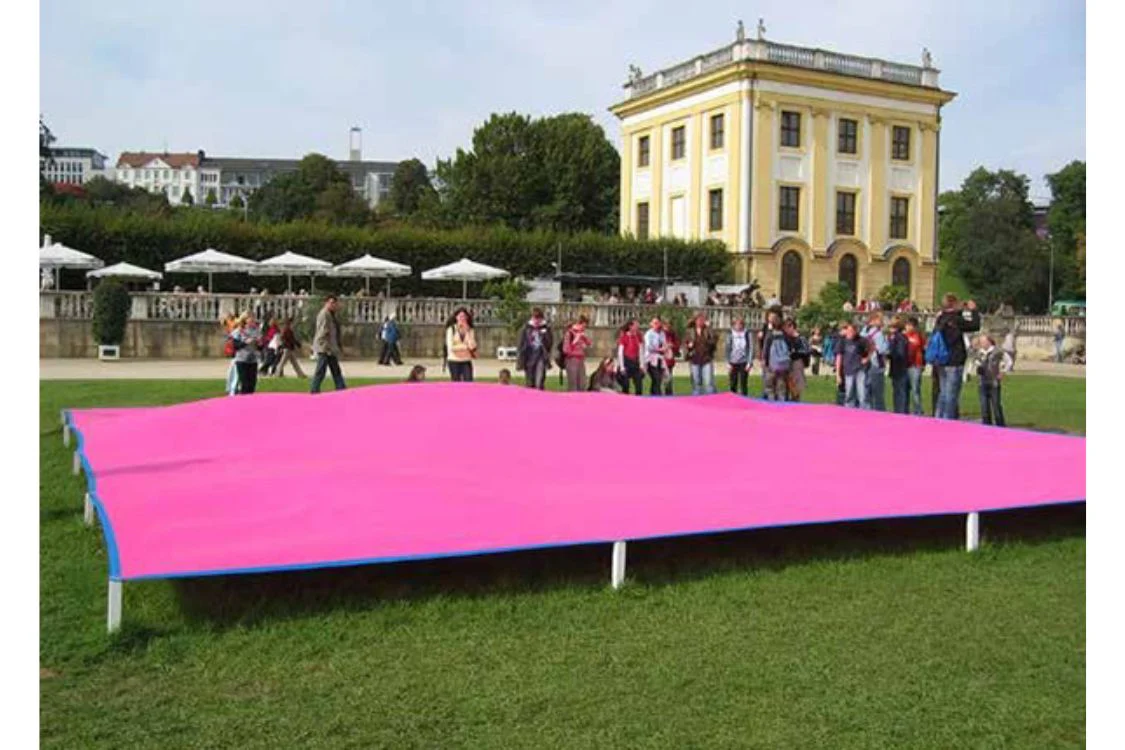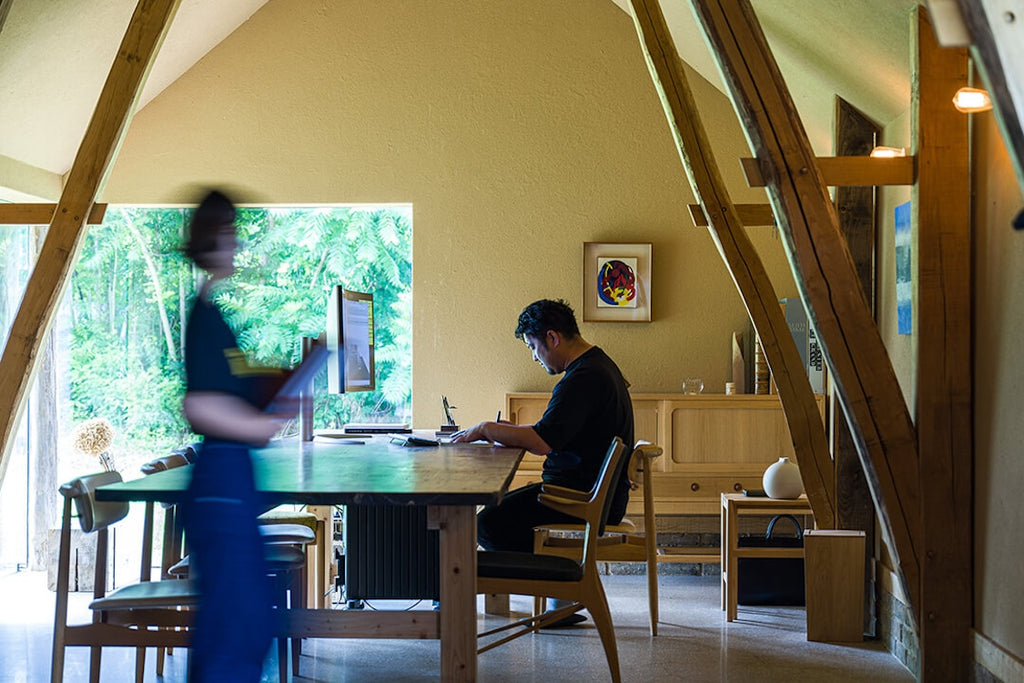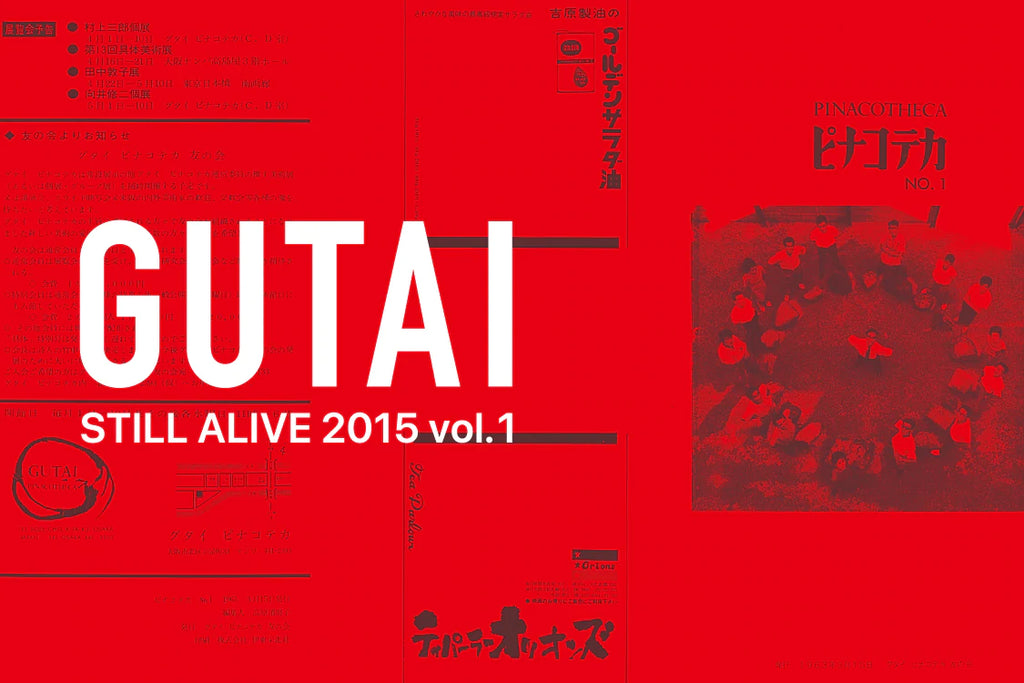ARTICLES
Atsuko Tanaka and Gutai|The Influence of Gutai on Tanaka and her trajectory after leaving the group
GUTAI STILL ALIVE 2015 vol.1
25/35

Work, 1955, Rayon, 1000 x 1000 cm / 2007 reconstructed for the documenta 12, Kassel Germany, Photo by Mizuho Kato @Ryoji Ito
A series of digital archives of the book "GUTAI STILL ALIVE 2015 vol.1" published by Gutai Art Association. The 25th installment of this series focuses on Atsuko Tanaka, a member of Gutai. Tanaka is famous for her "Electric Dress,” a masterpiece from her Gutai period. But even after leaving Gutai, she continued to work energetically, exhibiting her works at the international art exhibition “documenta (gGmbH)" Germany in 2007 and held a retrospective exhibition at the Museum of Contemporary Art Tokyo in 2012. Mizuho Kato, an art historian who was involved in organizing the retrospective exhibition, talks about the relationship between Tanaka and Gutai in detail.
Mizuho Kato
Art Historian
In the summer of 2007, on a lawn by the Aue pavilion at “documenta 12” in Kassel, Germany, a sheet of vivid pink cloth, measuring 10 x 10 meters, was spread 30 centimeters above the ground, waving at the slightest breezes, reflecting the glittering sunshine. It was a work by Atsuko Tanaka (1932-2005). The work instantly attracted the eyes of visitors from around the world to one of the world’s largest and historically most reputed international contemporary art exhibitions. Besides this pink cloth work, which was originally exhibited in 1955, the 12th edition of the Kassel exhibition – which has been held every four or five years since 1955 – featured other major works by Tanaka from the mid-1950s, including “Calendar” (ca. 1954), “Denkifuku (electric dress)” (1956 [1986]) and drawings based on Denkifuku (1956). In the following year, in the 16th Biennale of Sydney, held under the theme “Revolutions – Forms That Turn,” Tanaka’s “Work” consisting of 20 bells linked together and one of her chief productions in the mid-’60s, “Spring 1966,” were exhibited. After the disbandment of the Gutai group, Tanaka became the first former Gutai artist to be featured by overseas international exhibitions individually, apart from the context of the Gutai movement or that of art in postwar Japan. Also, no other Gutai artists have been taken up for retrospectives at public institutions in the West more often than Tanaka. Between 2002 and 2011, her retrospectives were held in Innsbruck, New York, Vancouver, Birmingham and Castellón. Since her days with Gutai, Tanaka had strongly wished to be appreciated as an individual artist rather than a member of the group. More than 35 years after she left the Gutai group in 1965, in her late years and after her death in 2005, Tanaka’s wishes were finally granted.
Tanaka had long been associated with her so-called “Denkifuku,” a dress-shaped work consisting of nearly 200 electric bulbs going on and off irregularly. In most cases, however, the work was introduced as just one of the most conspicuous examples of many fanciful works by Gutai, the avant-garde art group in Japan in the ’50s. For over 45 years since “Denkifuku,” Tanaka incessantly produced works, but they were described generally just in terms of their relations to electric bulbs and cords. In 2001, Ashiya City Museum of Art & History and Shizuoka Prefectural Museum of Art held the first retrospective of Tanaka, “Atsuko Tanaka: In Search of Unknown Beauty 1954-2000.” This exhibition changed the situation and paved the way for the aforementioned retrospectives, international exhibitions overseas and finally the 2012 retrospective at the Museum of Contemporary Art, Tokyo. I was lucky enough to be engaged in the 2001 retrospective and all the following exhibitions in planning, cooperation and various other ways. Through such experience I sharply felt the necessity of updating our view of Gutai, of looking at the group from much more aspects and more in detail.
Gutai had been associated with a painterly style, with emphasis on brushstrokes suggesting violent action and the bare texture of paint. In fact, works by chief Gutai artists including Shozo Shimamoto, Kazuo Shiraga, Saburo Murakami and Sadamasa Motonaga had such characteristics. In the meantime, paintings by Tanaka were a remarkable contrast to it, showing visual characteristics different from the painterly. Precise forms of circles and lines connecting them, elaborate compositions that cannot be made instantaneously, brushwork eliminating chance effect and looking always smooth and elaborate – all these features have little to do with the painterly style. More than one art critics had pointed out Tanaka’s peculiarity, the earliest case being in the spring of 1965, when Tanaka was still in the Gutai group.
Nevertheless, looking carefully at Tanaka’s oeuvre, we can in fact see her unique approach to the “body” and “matter,” elements which were essential to Gutai’s art. In Tanaka’s works “body” was not represented by the traces of action. Instead, the “body” appeared, symbolically, by the incessant changes on the visible surface of “Denkifuku” or by the glossy, haptically stimulative surfaces peculiar to her works after “Denkifuku.” Vinyl paint and acrylic lacquer that Tanaka constantly used were the “matter” chosen by the artist in order to materialize her interest in the body. The marriage of the paint’s properties and Tanaka’s talent was nothing less than her works.
Revisiting Tanaka’s works will lead us to explicate the diversity of the layers of Gutai’s thought and practice concerning the “body” and “matter.” At the same time, it urges us to pay attention to subtle distinctions between other Gutai members, instead of treating them in one lump with clichés. We should not just think what they had in common but rather realize how remarkably they differed between each other. That will be the first step for us to update our interpretation of Gutai and appreciate each Gutai member as an individual artist.
(Monthly Gallery, August 2014)
Read more about the “Gutai Art Association »
*Information in this article is at the time of publication.



